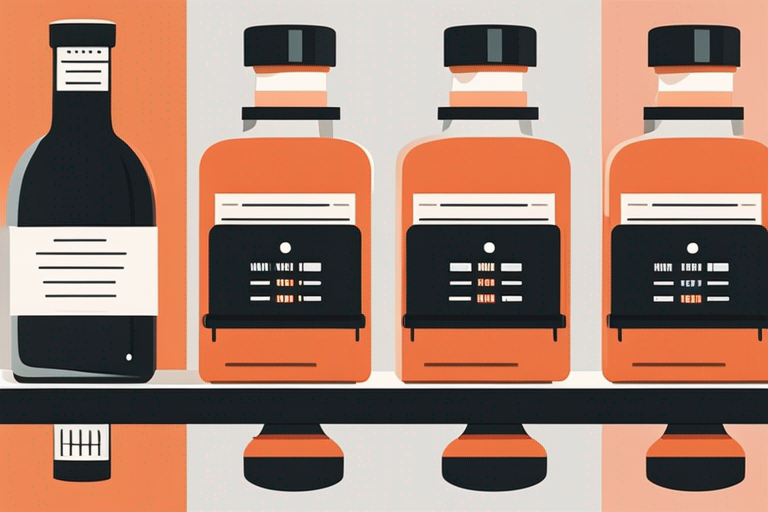
Unraveling the Mystery: Is the Sell By Date the Expiration Date?
Get Your Free Food Safety Cheat Sheet
30 most common foods with instant answers. Print it and stick it on your fridge—completely free!
Unraveling the Mystery: Is the Sell By Date the Expiration Date?
In the world of food safety and storage, dates printed on food packaging can often cause confusion. One of the most common sources of confusion is differentiating between the sell by date and the expiration date. Understanding the distinction between these dates is crucial for ensuring food safety and avoiding unnecessary waste. In this comprehensive guide, we will explore the differences between sell by and expiration dates, debunk common myths, and provide practical tips for food storage.
Sell By Date vs. Expiration Date: What's the Difference?
Sell By Date
- The sell by date is primarily intended for retailers and indicates the date by which the product should be sold or removed from the shelf.
- It is not a safety date but rather a guideline for retailers to ensure that consumers have ample time to use the product at its best quality.
- Foods can still be safe to consume after the sell by date if stored properly.
Best By Date
- The best by date, also known as the quality date, suggests the peak freshness and flavor of the product.
- It is not a safety date and does not indicate that the food is unsafe to eat beyond that date.
- Consuming products after the best by date may result in a decline in quality but not necessarily safety concerns.
Expiration Date
- The expiration date, also referred to as the use by date, is the date determined by the manufacturer until which the product is expected to be at its best quality.
- Consuming products after the expiration date can pose a risk to food safety as the product may have deteriorated in quality, taste, and nutritional value.
Debunking Common Myths About Sell By and Expiration Dates
Myth: Foods Must Be Discarded Immediately After the Sell By Date
- Truth: Foods can still be safe for consumption after the sell by date if stored properly. Use your judgment based on the food's appearance, smell, and texture.
Myth: Expiration Dates Are Always Accurate
- Truth: While expiration dates provide a helpful guideline, factors such as storage conditions and handling practices can impact the product's shelf life.
Myth: Freezing Food Extends Its Expiration Date Indefinitely
- Truth: Freezing can extend the shelf life of many foods, but it does not make them safe to consume indefinitely. Follow recommended storage times for frozen foods.
Practical Tips for Food Safety and Storage
Proper Storage Practices
- Store perishable foods, such as meat and dairy, in the refrigerator at or below 40°F (4°C) to slow bacterial growth.
- Keep dry goods, like grains and cereals, in airtight containers to prevent moisture and pest contamination.
- Follow guidelines for freezing foods to maintain quality and safety.
Rotation System
- Implement a first in, first out (FIFO) system in your pantry and refrigerator to ensure older items are used before newer ones.
Labeling
- Label homemade or repackaged foods with the date of preparation to track freshness and prevent consuming expired items.
Trust Your Senses
- When in doubt, rely on your senses. Check for signs of spoilage such as unusual odors, discoloration, or unusual texture.
Conclusion
Understanding the nuances of sell by dates and expiration dates is essential for making informed decisions about food safety and storage. While these dates provide valuable guidance, it's equally important to trust your senses and practice proper food handling and storage techniques. By following best practices and staying informed, you can minimize food waste, ensure food safety, and enjoy fresh, quality meals for longer. Remember, when in doubt, throw it out!

Authoritative Food Safety References
These agencies and university labs inform every tip and health precaution we publish.
USDA FoodKeeper – Cold Storage Guidelines
Official refrigerator, freezer, and pantry timelines maintained by the U.S. Department of Agriculture.
Visit USDA FoodKeeperFDA Produce Safety Rule & Grower Guidance
Field-to-fridge handling practices that prevent contamination of fruits, vegetables, and leafy greens.
Visit FDA Produce SafetyCDC Foodborne Illness Prevention Hub
Surveillance-backed guidance on pathogens, symptoms, and steps to reduce foodborne illness risk.
Visit CDC Food SafetyUC Davis Postharvest Technology Center
University research detailing optimal storage atmospheres for produce after harvest.
Visit UC Davis PostharvestPenn State Extension – Home Food Preservation & Safety
Peer-reviewed extension bulletins on safe canning, chilling, and reheating practices.
Visit Penn State ExtensionWhat is the difference between a Sell By Date and an Expiration Date on food products?
Can I eat food past the Sell By Date or Expiration Date?
How can I determine if food is still safe to eat after the Sell By Date or Expiration Date?
Do all food products have Sell By Dates or Expiration Dates?
How can I properly store food to extend its shelf life?
Get Your Free Food Safety Cheat Sheet
30 most common foods with instant answers. Print it and stick it on your fridge—completely free! Want more? Upgrade to the complete guide with 70+ foods.
Scan your food directly and get instant safety info using our AI-powered camera feature.